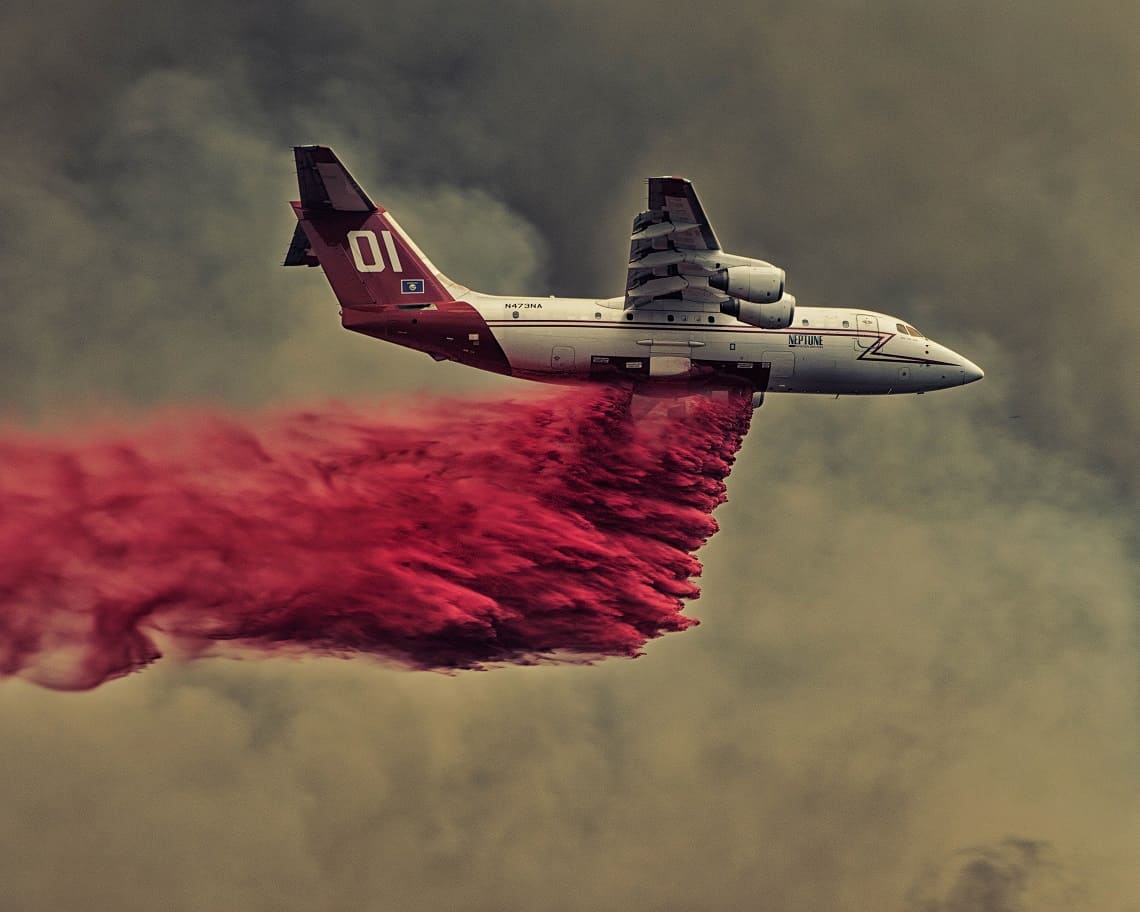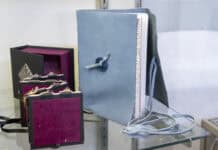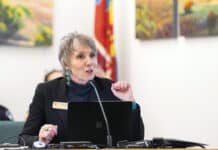
An air tanker divebombs the plume of a blaze. Firefighters haul an injured comrade through a dust storm. The flames of a brushfire light up the jagged face of a red mesa at night. This is the disaster photography of Jayson Coil, the interim assistant chief for Sedona Fire District and a firefighter on an interagency team that brings him to the most complex disasters around the country.
Before Coil was a firefighter, he learned the art and science of photography from his father the old-fashioned way, in a dark room.
 Years later, in the midst of his career as a first-responder, Coil bought his first digital camera and began bringing it out on the job. His images of the emergencies he encounters bring an artistic perspective to events most only read about in the news.
Years later, in the midst of his career as a first-responder, Coil bought his first digital camera and began bringing it out on the job. His images of the emergencies he encounters bring an artistic perspective to events most only read about in the news.
This kind of adventure photography isolates a beauty found only in fleeting calamities, when nature bares its fangs and firefighters are called in to quell it.
His photography presents an angle that often only front-line emergency personnel experience, showcasing the grace of vehicles and personnel in action.
 As a leader in the Sedona Fire District and an interagency firefighter with decades of expertise, Coil captures both the action and the natural splendor found in rural emergency response.
As a leader in the Sedona Fire District and an interagency firefighter with decades of expertise, Coil captures both the action and the natural splendor found in rural emergency response.
Coil joined the U.S. Army out of high school as a combat engineer and completed airborne training. After leaving the service, he went into a career as a professional lifesaver. He worked for White Mountain Ambulance in Springerville, became a paramedic, completed a degree in fire science, then a bachelor’s in business and is currently working on a doctorate in organizational psychology. He has 30 years in rural emergency and 20 years with Sedona Fire.
 His professional reputation as a skilled emergency manager has brought him all around the country. His role as a photographer is something he’s carried along that journey. “At first, I was scared to bring my camera out,” Coil said.
His professional reputation as a skilled emergency manager has brought him all around the country. His role as a photographer is something he’s carried along that journey. “At first, I was scared to bring my camera out,” Coil said.
“I’ve broken some cameras, busted up some lenses. Managing all that gear isn’t an easy task.” Firefighters are often weighed down with 100 pounds of equipment, but Coil still packs his camera and lenses. The payout from that comes in the form of epic images of events, such as the Brins Mesa Fire and Slide Fire, red rock wildfires that tore through Oak Creek Canyon.
“We had been preparing for Slide Fire for years,” Coil said. “It was the kind of thing we just knew would happen. When it started, it moved fast, really fast.”
 The steep scrambles of rock clogged with wood and debris, along with a breeze moving up the Coconino Plateau, fed into its rapid growth. “It escaped initial attack,” Coil said.
The steep scrambles of rock clogged with wood and debris, along with a breeze moving up the Coconino Plateau, fed into its rapid growth. “It escaped initial attack,” Coil said.
“It had already climbed up the slopes. But, over the hood of a pickup that night, we came up with a strategy.” “We knew where the favorable ground was,” he said.
“There were a lot of things about Slide Fire I felt fortunate about: It was early in the season, so we had all the resources we needed to succeed.”
 The Slide Fire expanded to the upland forests north and west of the canyon, burning a total of 21,227 acres, but was halted by fire lines crews dug to contain the fire. The fire had torn uphill through the west side of the canyon, but 10 years earlier, Coil had been in the same spot evacuating residents when a rain-on-snow event sent floodwaters cascading down the canyon, submerging several homes further downstream.
The Slide Fire expanded to the upland forests north and west of the canyon, burning a total of 21,227 acres, but was halted by fire lines crews dug to contain the fire. The fire had torn uphill through the west side of the canyon, but 10 years earlier, Coil had been in the same spot evacuating residents when a rain-on-snow event sent floodwaters cascading down the canyon, submerging several homes further downstream.
It demonstrates the opposing elemental forces at work shaping red rock country, each creating their own crisis for the humans in their path.
Enormous, complex disasters that Coil is called out on often resemble a military campaign, complete with an air assault consisting of Very Large Air Tankers, or VLATs, slamming the burn area with red slurry, fire engines, off-road vehicles, heavy-lifting helicopters, evacuation helicopters, spotting planes, and of course, armies of wildland firefighters on foot.
Coil has led the attack on some immense wildfires in Montana, Wyoming, Washington and Alaska, where he would find a few moments during an operation to snap more high-definition photos, perhaps of a helicopter flying through the smoke, or of a firefighter walking exhausted in the soot.
Coil’s expertise has earned him a leadership role in Sedona.
 “My office is nice and all, but I don’t get to go out much anymore,” Coil said.
“My office is nice and all, but I don’t get to go out much anymore,” Coil said.
But he’s still taking photos. His work has been featured in publications such as Rotor Magazine, The New York Times and Arizona Highways, among others.
Coil was recently promoted to SFD interim assistant fire chief in the last few months.
“I was always more of a technical guy than an artistic type,” Coil said. “But that doesn’t mean I don’t love doing both.”
More of Coil’s photography can be found www.jaysoncoil.com


















